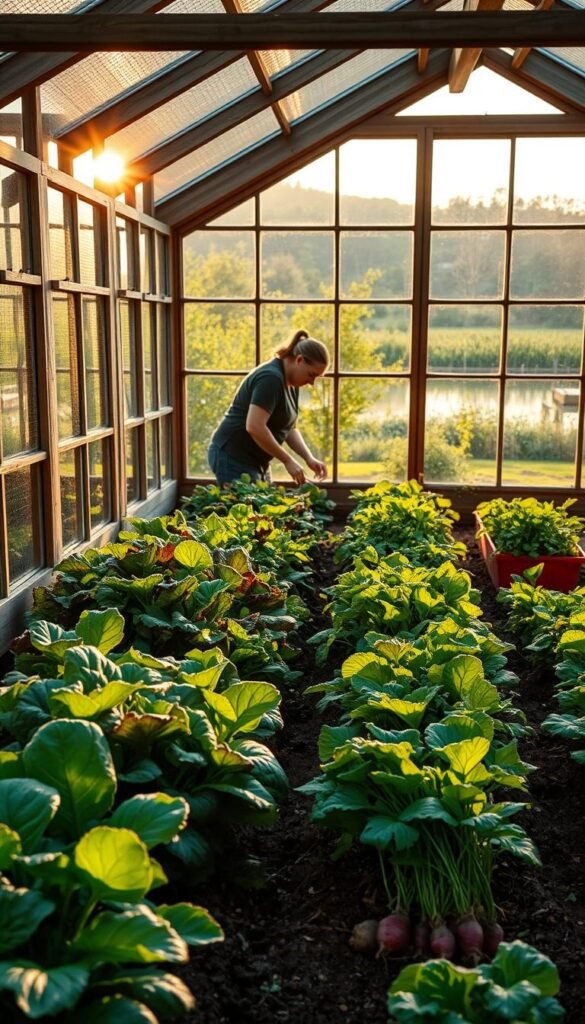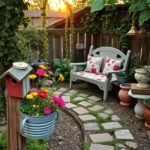Want fresh vegetables even when snow covers the ground? A simple cold frame can make it happen. These handy structures create a cozy microclimate, keeping plants protected and productive.
Imagine harvesting spinach or carrots in January. With a cold frame, your garden gains a 1.5-zone temperature boost. That means Maine growers can enjoy conditions like New Jersey winters. No expensive greenhouse needed – just smart design and sunlight.
Schools in Vermont prove it works. Their student programs yield crisp greens through freezing months. You get the same satisfaction plus continuous harvests with proper planning.
Start seeds as early as July for winter-ready crops. The frame shields plants from frost while extending your growing season. Best part? You’ll savor homegrown flavor all year.
Why Cold Frames Are a Game-Changer for Year-Round Gardening
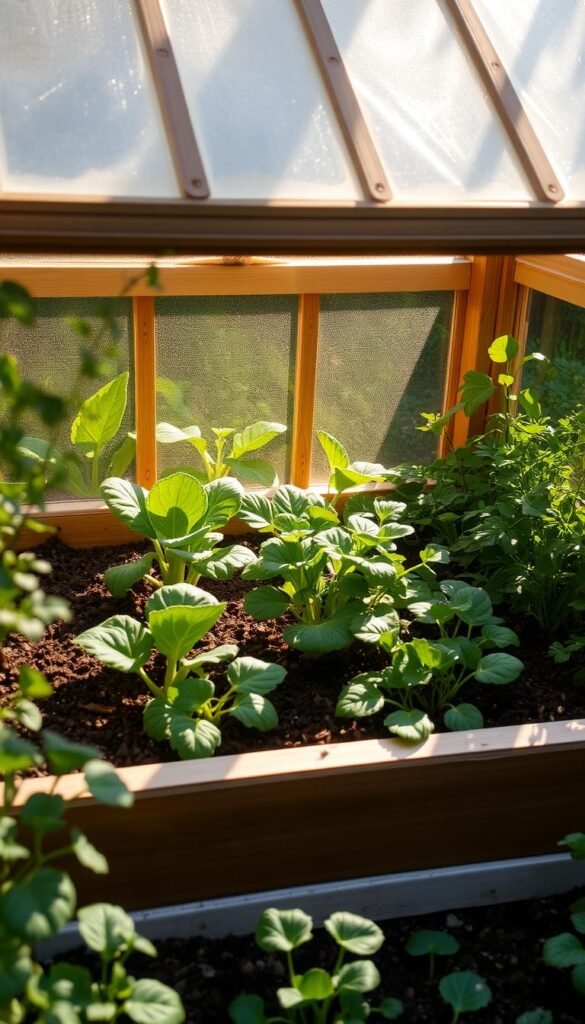
Ever wished your garden could defy winter’s chill? These compact structures create a microclimate, shielding plants from harsh weather while trapping solar warmth. The result? Crisp spinach in December and sweet carrots under snow.
How cold frames extend your growing season
Angled lids and south-facing placement capture maximum sunlight. The passive solar design keeps temperatures 10°F warmer than outside. Vent lids when it hits 50°F to prevent overheating.
Straw insulation and thermal mass (like water jugs) add frost protection. Vermont growers harvest “candy carrots” – their sugars concentrate in the cold. Spinach leaves freeze overnight but thaw perfectly edible.
The science behind their microclimate magic
Cold frames mimic a mini-greenhouse without heaters. Polycarbonate lids diffuse light evenly, while snow loads slide off easily. USDA data shows they shift your growing zone – a Maine frame equals New Jersey’s winter.
| Feature | Cold Frame | Greenhouse |
|---|---|---|
| Cost | $50–$200 | $1,000+ |
| Heat Source | Sunlight | Artificial |
| Maintenance | Low (vent daily) | High (systems check) |
| Season Extension | 3–4 months | Year-round |
For windy areas, secure lids with hooks. A broom clears snow in minutes. This season extension trick turns barren months into harvest time.
Building or Choosing Your Cold Frame
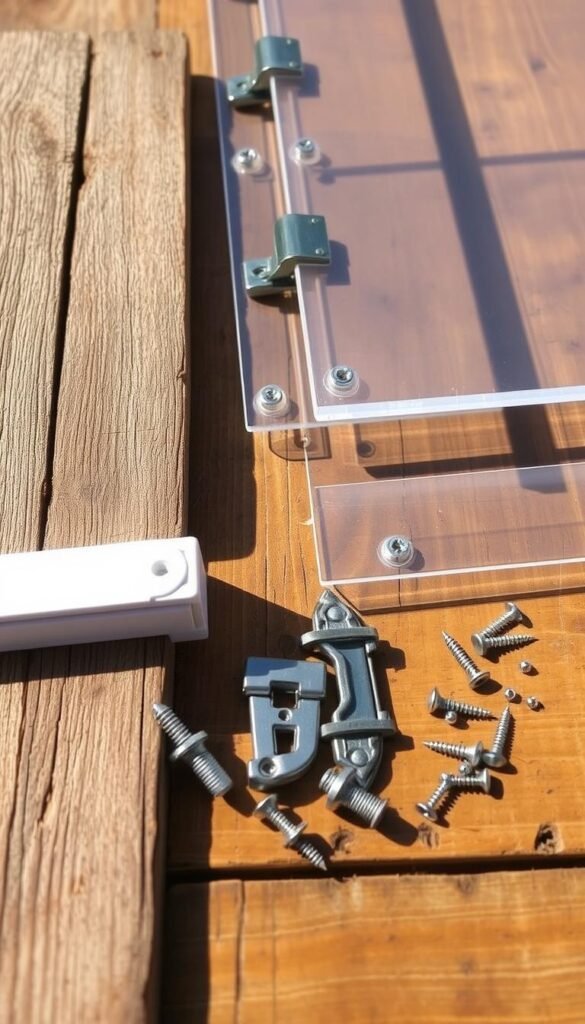
Ready to build your own protective growing space? Whether you DIY or buy, the right materials and placement ensure success. Let’s break down your options.
DIY vs. Store-Bought: What Works Best?
Repurposed storm windows make excellent lids for a budget-friendly frame. Vermont schools use 2″-thick plank boxes with a 12″ rear height. For those short on time, Charley’s Greenhouse sells polycarbonate models with auto-vents.
DIY perks:
- Costs under $50 with recycled materials
- Custom sizes fit your garden beds
Store-bought advantages:
- Durable plastic panels (UV-resistant)
- Built-in ventilation systems
Must-Have Materials
Rot-resistant cedar or redwood lasts years. For lids, twin-wall polycarbonate traps heat better than glass. Add hardware cloth underneath to deter pests.
| Material | Purpose | Cost |
|---|---|---|
| Cedar lumber | Frame construction | $3–$5 per foot |
| Polycarbonate | Light diffusion | $20–$40 per sheet |
| Hardware cloth | Rodent barrier | $15 per roll |
Smart Placement Tips
Angle the box 30° southward for winter sun. Avoid shady spots near trees. Peaceful Valley Farm Supply sells kits with optimal 8″–12″ height differentials.
Pro tip: Paint the interior black to absorb more light. Just ensure proper drainage—wet roots freeze faster.
Best Crops for All-Season Cold Frame Gardening
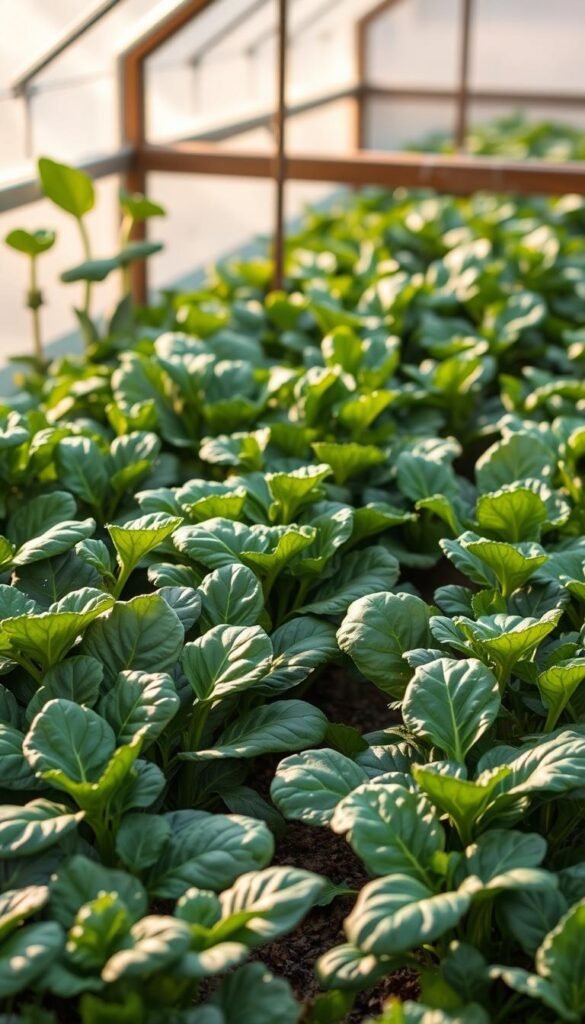
Not all greens handle the chill equally—pick wisely for cold frame success. The right vegetables will thrive under frosty lids, while others wilt. Focus on hardy plants that convert cold into sweetness or crispness.
Winter warriors: Spinach, mâche, and claytonia
Mâche, nicknamed “corn salad,” survives -10°F and tastes sweeter harvested frozen. Pair it with:
- Spinach (Winter Bloomsdale): Leaves freeze solid but revive at thaw.
- Claytonia: A Gold Rush-era green with heart-shaped leaves.
“Minutina, an Italian green, handles salty soils and adds crunch to winter salads.”
Spring and fall stars: Carrots, kale, and scallions
Sow carrots by August 1 for winter harvests. Frost converts their starch into sugar, creating candy-sweet roots. Add these to your rotation:
- Trieste chicory: Bitter greens mellow after frost.
- Ruffled Hungarian peppers: Surprisingly cold-tolerant.
| Crop | Planting Window | Key Trait |
|---|---|---|
| Spinach | July–September | Harvestable under snow |
| Kale | June–August | Flavor improves with frost |
| Carrots | August | Sweeter after freezing |
Crops to avoid in cold frames
Skip tomatoes and cucumbers—they stunt below 50°F. Moisture-sensitive plants like basil also struggle. Stick to hardy greens and roots for reliable yields.
Pro tip: Interplant quick growers (scallions) with slow ones (kale) for continuous harvests.
Season-by-Season Cold Frame Strategies
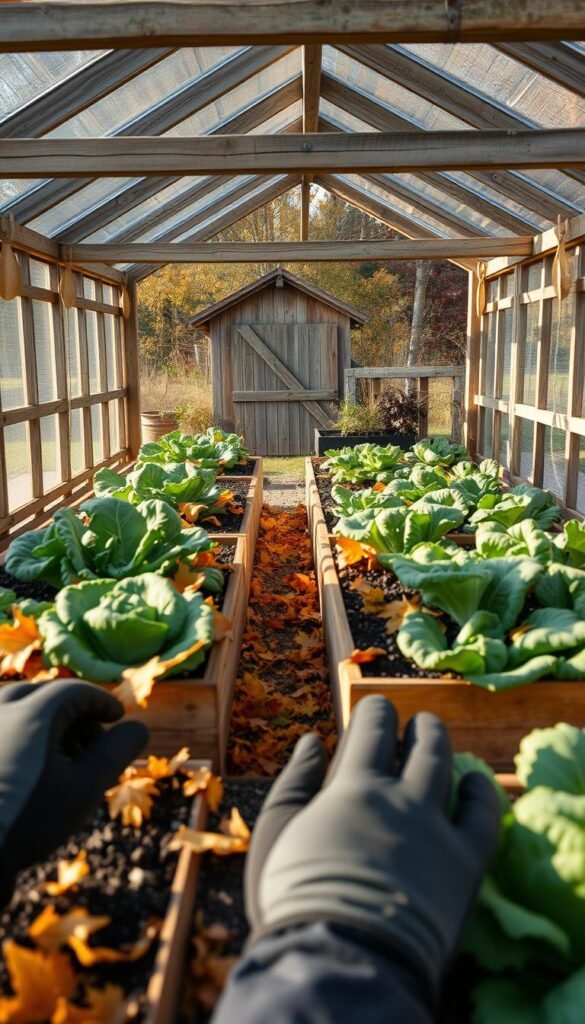
Mastering seasonal shifts keeps your garden productive through every weather change. Tailor your approach to harness each season’s strengths—whether nurturing tender seedlings or defying sub-zero nights.
Spring: Jumpstart Growth Safely
Pre-warm soil by covering beds with black plastic for a week. This tricks heat-loving plants like cabbages into sprouting earlier. When transplanting indoor seedlings, follow a 2-week hardening schedule:
- Days 1–3: Place outdoors for 2 hours in shade.
- Days 4–7: Increase to 4 hours with morning sun.
- Week 2: Leave overnight if frost isn’t forecasted.
Zone 6 gardeners can start tomatoes by mid-April. Further north? Delay until May but use frames to trap daytime warmth.
Summer: Beat Heat and Pests
Swap lids for 40% shade cloth when temperatures soar above 80°F. This prevents leafy greens from bolting. Companion planting also thwarts pests:
- Nasturtiums repel aphids from kale.
- Dill attracts predatory wasps to eat caterpillars.
For sweet potato slips, bury tubers halfway in frames. They’ll sprout vines ready for June transplanting.
Fall and Winter: Harvest Through Freezes
Add row covers inside frames when nights dip below 20°F. This creates air pockets, boosting insulation. October tasks include:
- Mulching leeks with straw for winter harvests.
- Planting mâche seeds that germinate in freezing soil.
Snow acts as a blanket—brush off only if lids sag. Rotate harvests every 2 weeks to keep plants productive.
“Voles avoid tree pots. Sink these containers into beds to shield carrot roots.”
Adjust planting dates by zone: Mainers sow spinach by July, while Virginians wait until September. Your weather dictates the time, but frames extend the days you can grow.
Managing Your Cold Frame Like a Pro
Keeping plants thriving inside a protective structure requires smart techniques. With the right approach, you’ll maintain ideal temperatures, moisture levels, and soil health—no matter the weather outside.
Ventilation tips to prevent overheating
Crack the lid when indoor readings hit 50°F. Automatic openers like Univent adjust based on heat, preventing damage. For manual systems:
- Use min/max thermometers to track fluctuations
- Open ends partially on breezy days to reduce wind stress
- Close covers before dusk to retain warmth
Reflective materials lining the interior boost light diffusion. This prevents hot spots that can scorch leaves.
Insulation tricks for sub-zero nights
When frost threatens, add layers for extra protection. Try these tips:
- Line walls with bubble wrap (½” gaps for airflow)
- Stack straw bales against the exterior
- Drape horticultural fleece over plants
Snow under 6″ acts as insulation—brush off only heavy accumulations. For polar vortex events, wrap the entire frame in moving blankets secured with bungee cords.
Watering and soil maintenance year-round
Check soil moisture by pressing a finger 1″ deep. Water only in mornings to prevent overnight freezing. Consider these upgrades:
| Tool | Purpose | Benefit |
|---|---|---|
| Dramm wand | Gentle watering | Prevents soil disruption |
| Compost tea | Monthly soil boost | Enhances microbial life |
| Mycorrhizal inoculants | Root support | Strengthens cold tolerance |
For pest control, install hardware cloth barriers underneath beds. Neem oil sprays handle aphids without harming plants. Rotate crops every season to maintain soil vitality.
“Automatic vent arms pay for themselves by preventing crop losses during unexpected warm spells.”
With these strategies, your frame becomes a resilient growing space. For more season extension techniques, explore companion methods like row covers.
Harvesting Fresh Greens Even in the Snow
Picture clipping fresh greens while snow blankets your garden. Maine growers prove it’s possible—scallions and mâche thrive under icy lids. Use scissors to snip frozen leaves; they’ll thaw perfectly crisp.
Mix hardy vegetables like minutina and radicchio for vibrant winter salads. Blanched spinach freezes well for soups, while lacto-fermented carrots add zing. Try roasting “candy carrots” with thyme for a sweet, earthy side.
Beyond food, winter harvests boost mood during short days. A Hori-Hori knife and insulated basket make gathering easier. With yields up to 15 lbs/sq ft, your garden defies the season.

